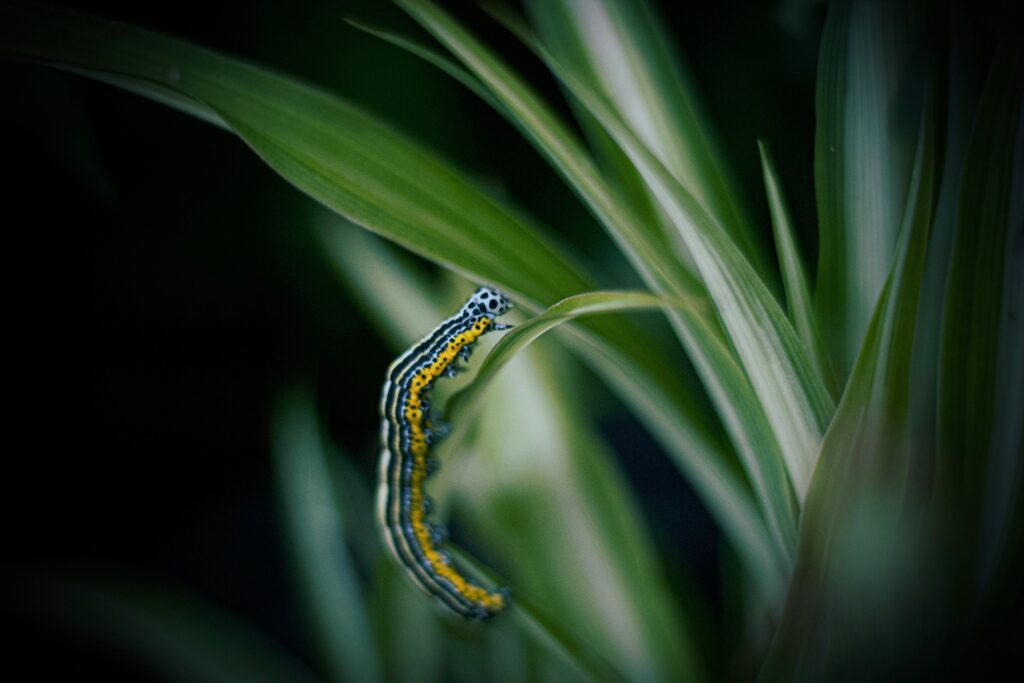
Image: Pixabay
Baculoviruses are fundamental within integrated pest management (IPM).
Several outbreaks of caterpillars of the genus Helicoverpa are attacking Intacta transgenic soybean crops in the Brazilian states of Mato Grosso do Sul, Mato Grosso and Maranhão. The strong pressure draws the attention of producers and researchers, since GMO technology should offer resistance to this caterpillar, although the dry climate that has affected these areas directly influences the increase in the presence of caterpillars in the initial phase of the oilseed crop.
According to researcher Germison Tomquelski, from the consultancy Desafios Agro, “the presence of caterpillars is representative and is requiring insecticide applications at the beginning of the harvest”. “We are facing a different scenario this year. It is possible that there is a tendency for more intense occurrence of Helicoverpa in Intact soybeans. This is a group of polyphagous pests, which multiply in the production system. It may be more challenging to deal with them from now on”, he highlights.
{module Form RD}
According to him, it is not yet known whether the predominant populations of the pest observed in MS and MT are Helicoverpa armigera, Helicoverpa zea or hybrid. For Tomquelski, the application of insecticides, whether biological or chemical, should preferably occur when the pests are in the initial stage of development: “In 1st and 2nd instar caterpillars, bioinsecticides such as baculoviruses show control efficacy of the order of 90%. For larger caterpillars, we recommend integrating chemical insecticides into management.”
Guilherme Ohl, researcher at Ceres Consultoria, states that it is “fundamental for producers to anticipate the problem, through monitoring, and have appropriate tools on hand at the right time to take control”. Still in relation to the control of Helicoverpa, Ohl understands that “one technology must defend the other”.
“Baculoviruses are fundamental within integrated pest management (IPM), as well as chemicals, the 'traps'. The ideal is to start the selected treatment, depending on the crop, when monitoring indicates the average presence of one Helicoverpa per meter, in the vegetative phase of soybeans and ½ a caterpillar of the genus, per meter, in the reproductive stage”, he ponders.
However, according to Guilherme Ohl, nowadays, “the biggest fear” of experts is that other species of caterpillars, in addition to Helicoverpa, “are 'escaping' the control of Intacta technologies”. “In the last two harvests, Helicoverpa zea escaped from corn, went to cotton and this year we see the pressure occurring in soybeans”, he warns.
“We also noticed an increase in the population of Spodoptera frugiperda, Heliothis virescens and Rachiplusia nu caterpillars. Possibly, there is an adaptation of these pests to Bt soybean technologies, which occupy 86% of the oilseed planted in the country,” he adds.
According to agronomist and consultant Octavio Augusto Queiroz, from Evoterra Consultoria, the beginning of the soybean harvest has been marked by outbreaks of Helicoverpa spp: “We have had an increase in caterpillar pressure for two years here. We believe this comes from the correlation between pests of off-season corn and soybeans. It is possible that this scenario will worsen in the coming years.”
Technical manager of AgBiTech Brasil, agronomist Marcelo Lima assesses that the outbreaks of Helicoverpa at the beginning of the harvest, as well as the resilience of caterpillars in the face of biotechnology, generate concern, even though the scenario appears to be less serious compared to that of 2013 and 2014, when Helicoverpa armigera caused serious damage.
“Today we have more effective management tools, from chemical and biological insecticides to moth attractants”, he concludes.
Source: Leonardo Gottems | agrolink













